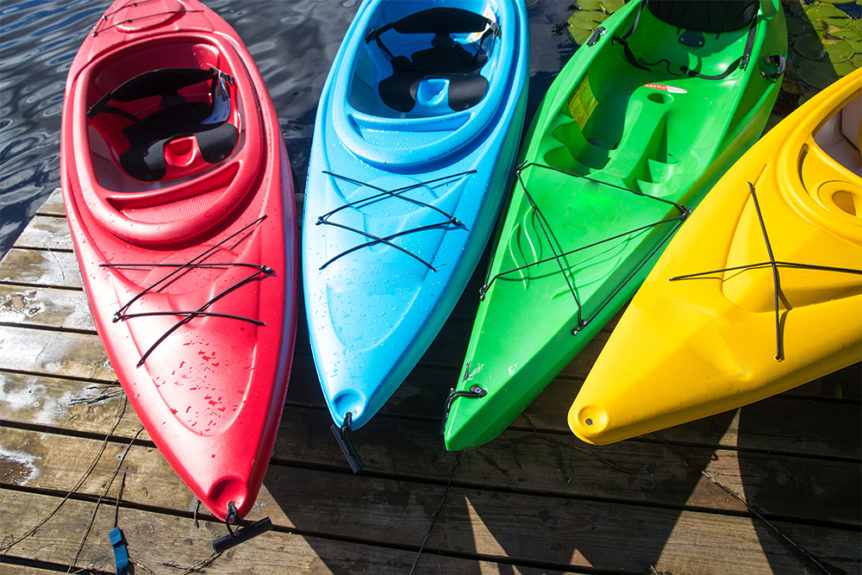There’s nothing better than spending a weekend on the water sharing time with your friends in your kayak, and the best way to continue those memories is by learning how to store a kayak so you can enjoy it for many years. To keep your kayak in great shape year after year, it’s important to learn how to store a kayak during the offseason. Check out our tips below for best practices on how to store a kayak and keep the good memories flowing for years to come.
Protection From the Elements
Most kayak owners don’t know how to store a kayak properly. It’s important to store it correctly to increase its lifespan. Regardless of what materials your kayak is made from — plastic, wood, or carbon fiber — storing it incorrectly will damage it over time. Weather changes and fluctuating temperatures will eventually damage the hull.
Keeping a kayak outside will shorten its lifespan. Rain, snow, direct sunlight, moisture, and hail will slowly but surely ruin it, creating warping, fading, and hull damage. Rodents can also chew through it and nest inside it. Even though you can get rid of bugs and rodents, they may create irreparable damage to your kayak.
Security and Theft Protection
A good kayak is an expensive investment. Leaving it outside, where it is visible, can increase the risk of theft. If it’s outside, keep it hidden and locked or chained to something secure (here’s a great kayak security lock). Storing it indoors will lower its risk of being stolen, but be sure to take proper precautions for wherever it is stored, indoors or out. Remember, an ounce of prevention is worth a pound of cure.
How to Store a Kayak
While weather changes can create hull damage, the way it’s stored also plays a role in its lifespan. Storing it incorrectly can weaken and deform it. It’s important to research how to store a kayak to preserve its lifespan. Here are some tips we’ve compiled on best storage techniques.
- Before putting your kayak away for the offseason, clean it thoroughly. Rinse it with your hose and remove any dirt, bugs, or residue. Consider using an all-purpose soap and microfiber cloths to ensure cleanliness. Be sure to make sure everything is clean, including any nooks and crannies. If there are fabric portions of the seat, wash them by hand or throw them in your washing machine. Drain any excess water and then leave it in the sun to dry completely in order to prevent mold and mildew. Want to use a kayak wax or UV protectant to keep it looking shiny and new? Now is the time to put it on! (Before choosing a wax, make sure it is safe for your kayak’s materials. There are different waxes for different types of materials.) Need more cleaning help? Here’s a helpful blog on how to clean your kayak.
- We recommend a storage cover for your kayak. It doesn’t matter if you’re storing it inside or outside, a kayak cover is helpful regardless of where it’s being stored.
- Avoid storing a kayak directly on the ground on its hull. Kayaks are not built to sit on their hulls for long periods of time, as it can create warping. Instead, use a kayak mounting system, like a kayak rack.
Keep Your Kayak in a Self-Storage Unit
Does learning how to store a kayak stress you out? We’ve got you covered! While the best place to store a kayak is indoors, most people don’t have room for kayaks in their garages or basements. Even further, a climate-controlled environment is the best way to lengthen a kayak’s lifespan.
If you need a place for your kayak, consider renting a storage space. Here at TMS Self Storage, we have a variety of storage unit sizes, giving you plenty of room for storing one — or multiple — kayaks! Our climate-controlled units will help ensure that your kayaks are protected from fluctuating temperatures, rodents, and warping from the sun. By storing your kayak during the offseason and picking it up in the spring, it will stay ready for all your water adventures. Reach out to our friendly staff today to learn about our storage rentals!

